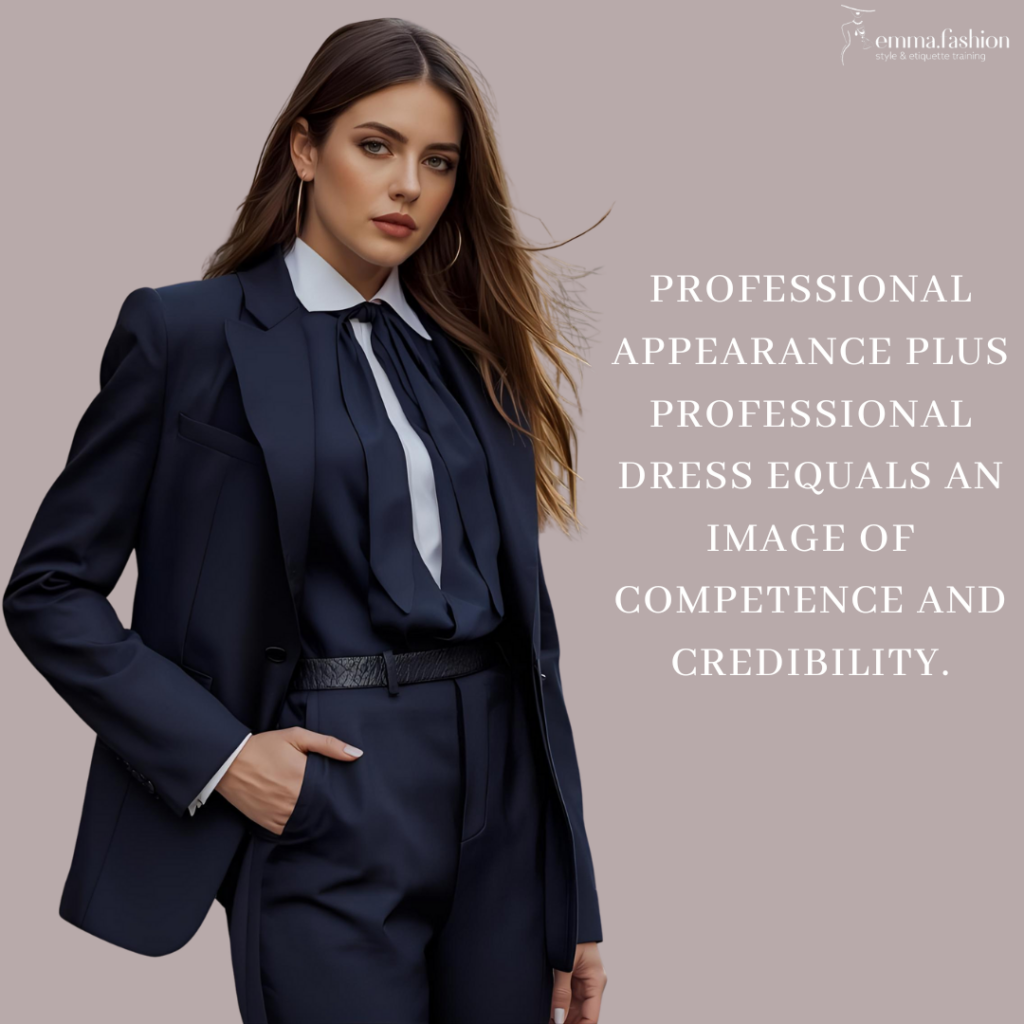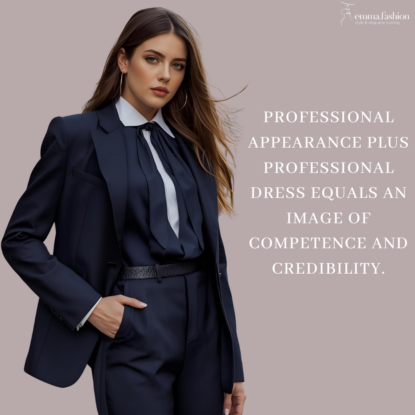Professional Appearance vs. Professional Dress: How They Shape Your Image
In the workplace, first impressions matter—and your professional image often speaks before you do. While many people use “appearance” and “dress” interchangeably, they are not the same. Both play distinct yet complementary roles in how others perceive your competence, credibility, and authority. Understanding the difference can help you manage not just how you look, but how you are remembered.
Professional Appearance: The Full Visual Impression
Professional appearance encompasses your overall visual presence. It’s the sum of:
- Clothing choices (what you wear day to day)
- Grooming (hair, nails, skin, fragrance, personal hygiene)
- Fit and polish (whether your clothing is tailored, wrinkle-free, and suitable for your role)
- Consistency (how reliably you maintain a neat, put-together look)
Appearance is about more than just the outfit—it’s how all the elements come together to reflect your professionalism. A strong appearance communicates that you respect yourself, your colleagues, and the environment you work in.
Professional Dress: Clothing as a Tool of Influence
Professional dress, on the other hand, zeroes in specifically on your clothing choices. What you wear can be a subtle but powerful tool of influence. Dressing intentionally and appropriately can:
- Reinforce your authority – A well-tailored blazer or suit can establish credibility instantly.
- Earn respect from colleagues and clients – Polished attire shows attention to detail and seriousness about your role.
- Support career advancement – Dressing for the role you aspire to, not just the one you have, positions you as ready for growth.
- Align with professional goals – Clothing choices can signal creativity, leadership, reliability, or adaptability, depending on what best fits your industry and ambitions.
Professional dress is not about expensive labels—it’s about making intentional choices that align your clothing with your career trajectory.

Why the Distinction Matters
While professional dress is a critical component of professional appearance, it is only one piece of the puzzle. For example, a sharp suit loses impact if paired with unkempt grooming or poor posture. Similarly, someone with impeccable grooming and polished demeanor may still undermine their image by wearing clothes that are sloppy, ill-fitting, or inappropriate for the setting.
In short:
- Appearance = the big picture (dress + grooming + presence)
- Dress = the clothing itself (the strategic choices you make)
When combined, they form a cohesive professional image that communicates confidence, respect, and competence.
Stand Out, Don’t Just Fit In
A well-managed professional image doesn’t just help you blend into the workplace—it helps you stand out for the right reasons. By balancing professional appearance with intentional dress, you create a personal brand that reinforces your authority, earns respect, and supports your career growth.
Your image is always communicating something—make sure it’s aligned with your goals.





Comments